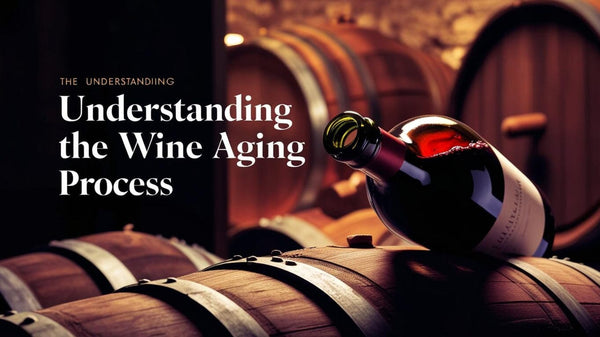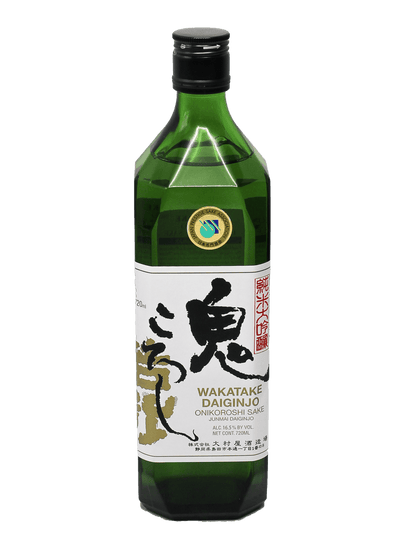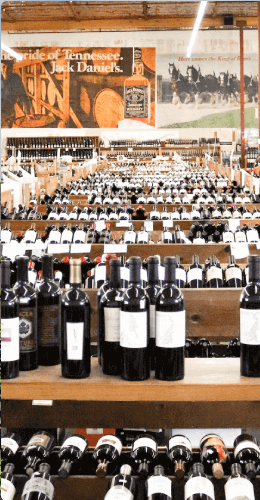Understanding the Wine Aging Process

The vast majority of wines are consumed young, in the first 2-3 years of their life, as the winery made them with that intention. This makes knowing about the wine aging process, and questions of how long to age a wine and when to open it, unnecessary.
Such basic wines may evolve very rapidly from fresh to over-the-hill. Thus, not all wines improve with age. In a few cases, much less frequently, wines are made with aging potential, meaning the winemaker intended them to evolve and mature in the bottle. If you want to buy wine with aging potential then you have to understand the wine aging process.
What is the Process of Aging Wine Called?
That’s easy: wine aging. People may also refer to “laying down” a wine or “cellaring” wine. Those wines that will age well can be called “cellar selections.”
In such cases, the question of when to drink the wine comes to the fore. There is no universal rule for aging and determining a wine’s optimal drinking time. When you look at the best wines online, for example, Bottle Barn has a complete section of Fine and Rare wines, most of which were made for aging.
Understanding Bottle Aging of Wine
Bottle aging, distinct from the maturation that occurs during barrel aging, begins once the wine has been bottled. The aging temperature must be steady and cool, ideally around 55 degrees Fahrenheit. This aging phase is anaerobic, meaning it takes place in the absence of oxygen. More precisely, rather than a total absence of oxygen, there is a minimal supply through the cork. A complete lack of oxygen could lead to reductive aromas in older wines.
Bottle aging is primarily influenced by chemical reactions between the wine’s components—mainly alcohol, acids, and water. Alcohols and acids form esters, which water then breaks down into alcohols and acids, which react again to form more esters, continuing the cycle.
So, it’s good to consider a wine’s acidity and tannin levels when you peruse wine.
Also Read: How Cellar Climate Impacts Barrel-Aged Wine
High Acidity in the Wine Aging Process
Wines with higher acidity tend to last longer. As wine ages, it gradually loses its acids and becomes flatter. Therefore, a wine with higher acidity will have a longer aging potential, which is good to consider when you look for wine online for the cellar.
These changes are not as easily perceived as those occurring in other key wine elements, such as phenolic compounds. This group includes a complex mix of components that are especially significant for red wines. The most important are the anthocyanins, which are responsible for color, and the tannins, which provide structure. Phenols also play a role in white wines but are present in lower concentrations.
Tannin Structure in the Wine Aging Process
Red wines with higher tannins tend to age better than those with lower tannins. Tannins come either from contact with the grape seeds and skins during winemaking or from contact with wood when aging in oak barrels.
A wine with well-balanced tannins—those derived both from the grape and from oak—will tend to soften gradually over time as the tannins break down. While tannins can help a wine age well, if the wine is not well-balanced from the start, it will not improve with time.
Long-lived white wines do not need tannins to age well.
What to Look for When Aging Wine
During bottle aging, the wine’s color changes. Young red wines, which may show purplish hues, gradually take on a garnet tone as they age, eventually displaying brick or orange hues when fully mature.
The tannic structure, which gives the wine its backbone, changes alongside the color. Young red wines contain numerous free tannin particles, which provide a large surface area that interacts with the mouth, particularly with saliva. This interaction causes a drying sensation known as astringency.
As wine ages in the bottle, its tannins and color compounds (anthocyanins) gradually change. These molecules bond together in a process called polymerization, forming longer and longer chains. Because larger chains have fewer free molecules, they interact less with your palate, softening the wine’s texture and making it feel smoother.
Also Read: Why Aged Spanish Wines Are True Treasures
Eventually, these chains become too big to stay dissolved and settle as sediment at the bottom of the bottle. This explains why older red wines lose their deep color, shifting from purple to red or even orange, and why mature wines often have pigmented sediment.
White wines evolve differently. They contain different phenolic compounds and lower levels of tannins and anthocyanins. Over time, exposure to oxygen causes a gentle darkening, giving older whites a richer, golden hue.
Wine’s Aroma Change in the Wine Aging Process
The maturation process also significantly affects the wine’s aromatic profile. The various chemical components that create its aromas interact with each other, forming new compounds. The intense fruity aromas found in young wines can evolve into a more complex bouquet, revealing new and intriguing aromatic dimensions.
Mature red wines often develop notes of truffle, leather, tobacco, game, and forest floor, while white wines tend to develop aromas of dried fruit, dried herbs, and honeyed notes. In both cases, primary fruit aromas become less pronounced as the wine ages.
At some point in this process, a wine will pass its peak drinking window. Its complexity will begin to diminish rather than increase. This does not necessarily mean the wine is undrinkable, but it will have moved past its best moment.
Conclusion
Understanding the wine aging process is crucial for both collectors and enthusiasts looking to buy age-worthy wines. When shopping for wines to age, focus on those with high acidity, well-balanced tannins (for reds), and proper structure. Store your collection at 55 degrees Fahrenheit to ensure proper development. Whether you're starting your first wine cellar or expanding your collection. Visit our wine shop today to explore our curated selection of age-worthy wines for your cellar.


















Interesting read on wine aging! It’s amazing how time can enhance flavors and aromas.
Leave a comment